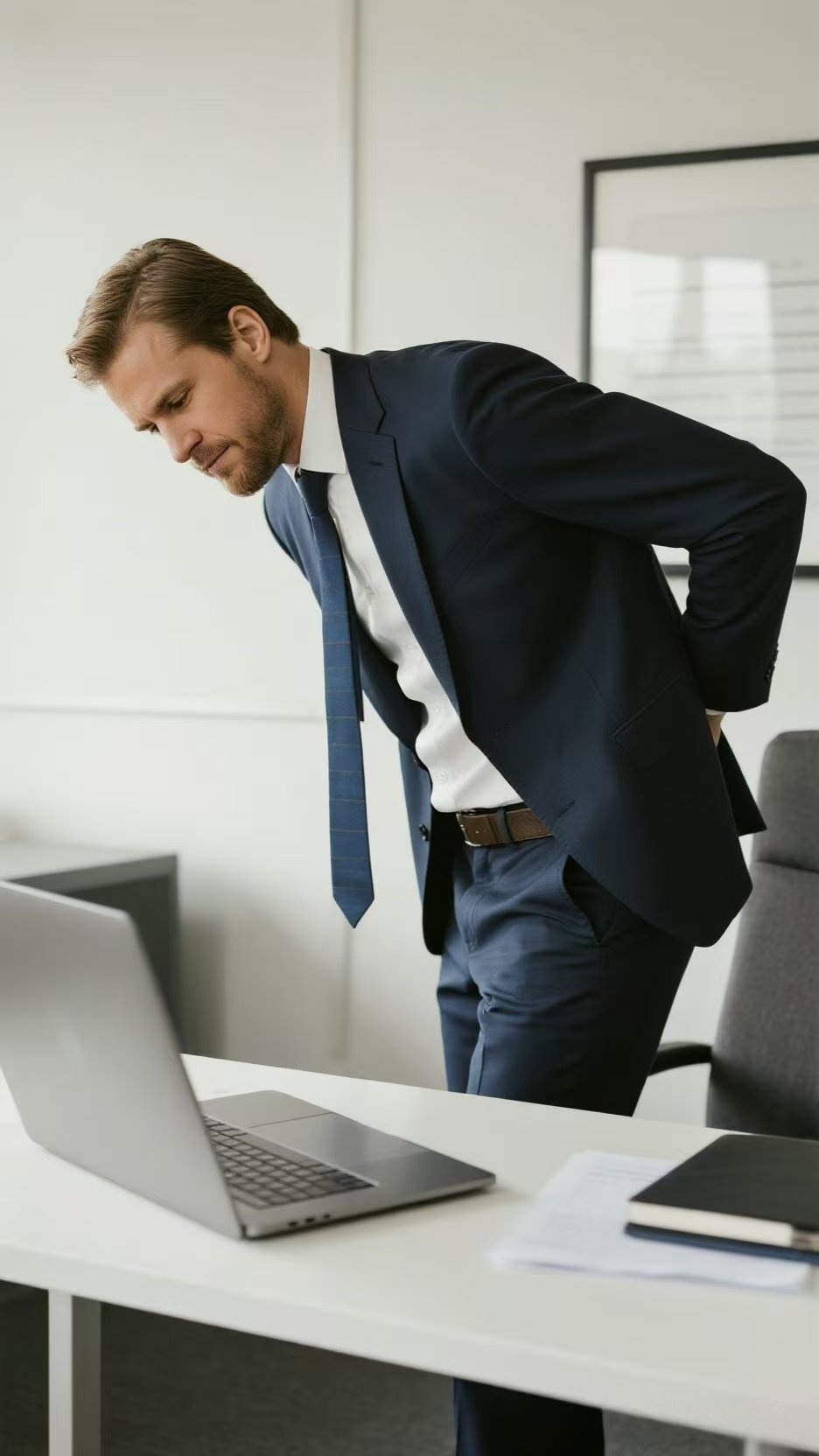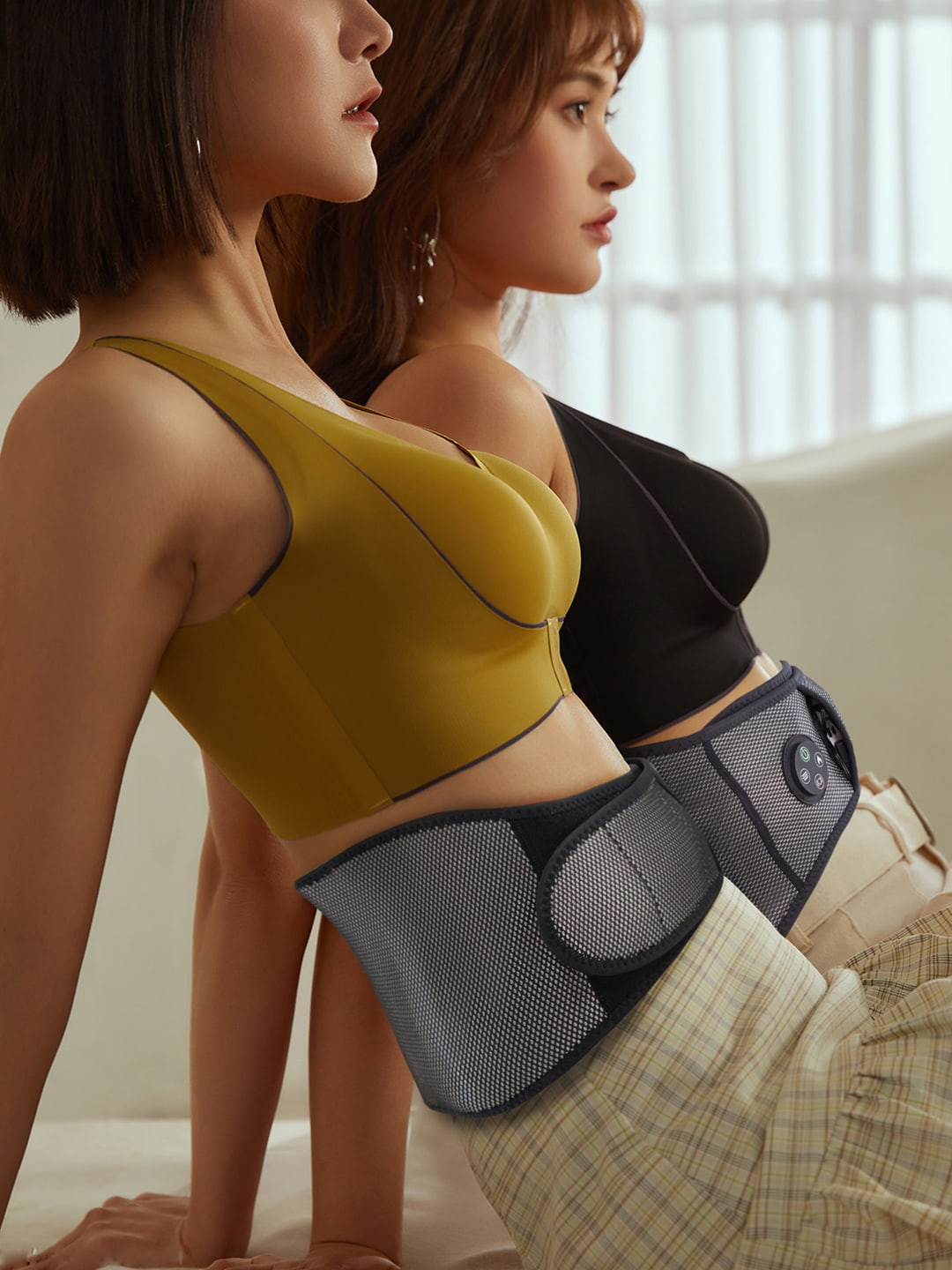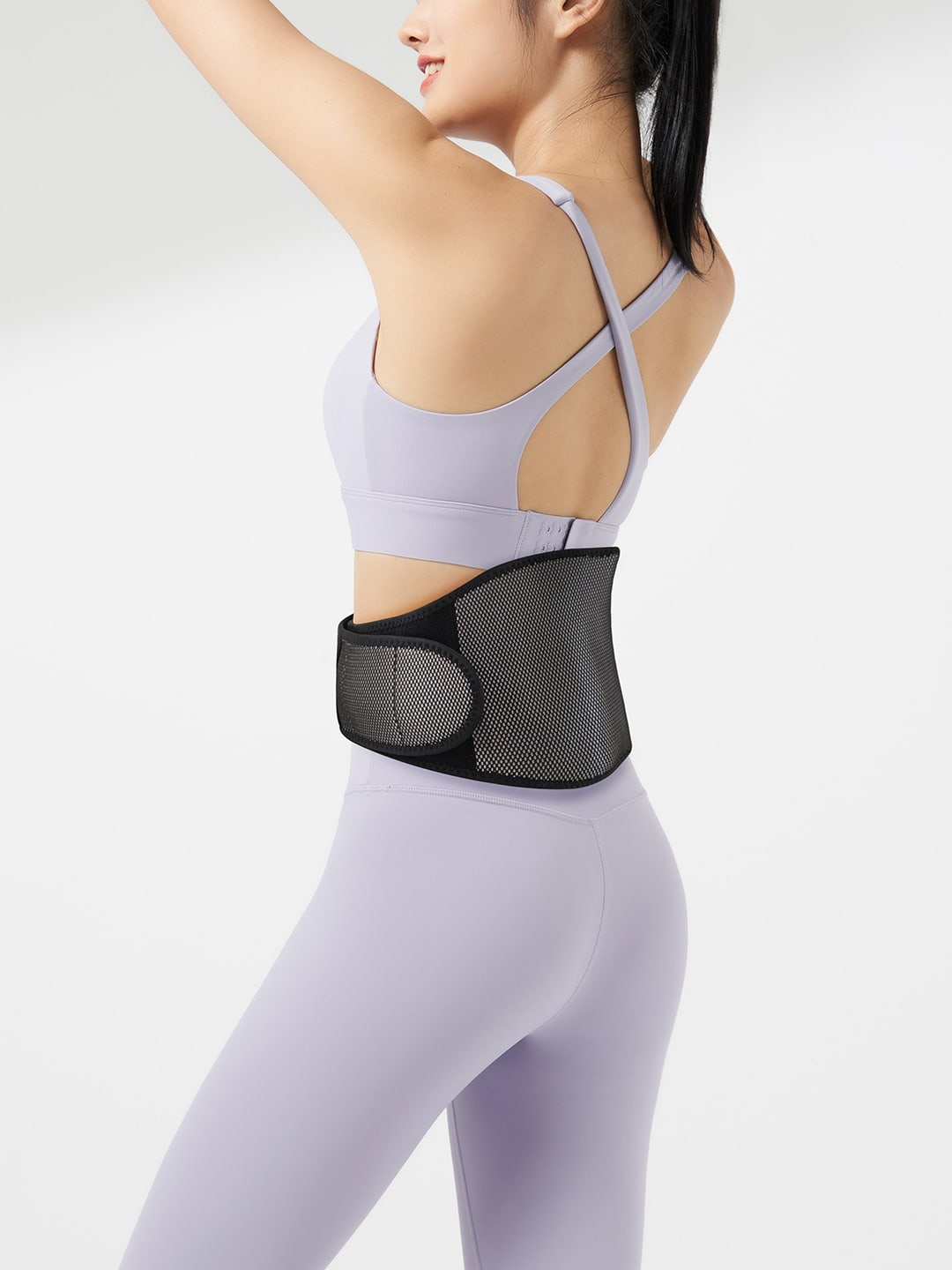- By Grace
- Updated on
That persistent ache in the lower back – it’s a burden many middle-aged and elderly individuals know all too well. It can significantly dim the quality of daily life. When you're also navigating the complexities of scoliosis, finding safe and effective relief becomes even more crucial. Could a specific type of lower back massage machine be a helpful ally? Many believe so. These devices aim to soothe tired muscles and ease discomfort. However, with scoliosis, which involves an atypical curvature of the spine, the approach to massage needs to be thoughtful and well-informed. This article explores how to select and use a suitable lower back massage machine for these issues, particularly when scoliosis is part of your health picture, focusing on comfort without compromising your spinal well-being.
The journey to finding the right lower back massage machine as support involves understanding your body's unique needs and the capabilities of various massage technologies. It's not just about a quick fix; it's about sustainable comfort and making choices that respect your spine's condition. We'll delve into different types of massagers, their potential benefits, and, most importantly, how to use them safely if you have scoliosis. Remember, the goal is always to enhance your comfort and mobility, working in harmony with your body. A quality lower back massage machine, which can also be considered a lower back pain machine, can be a wonderful tool when used correctly.
Understanding Lower Back Pain and Scoliosis Challenges
Lower back pain is incredibly common, often stemming from muscle strain, arthritis, or the general wear and tear that can come with age. For middle-aged and elderly individuals, these factors can be compounded by decreased muscle elasticity and changes in spinal discs. Now, introduce scoliosis into this equation. Scoliosis is a condition characterized by an abnormal sideways curvature of the spine. It can range from mild to severe and often develops during the growth spurt just before puberty, but it can also affect adults, sometimes as a progression of childhood scoliosis or due to degenerative changes like osteoporosis. Have you ever wondered how such a curvature impacts the back? It can lead to an uneven distribution of weight and stress on the spine, muscles, and ligaments.
This unevenness is key. With scoliosis, certain muscles may become overworked and tight as they try to compensate for the curvature, while others may become weak or stretched. This imbalance can be a significant source of chronic pain, stiffness, and reduced mobility. It's not just a simple backache; it's a complex interplay of skeletal structure and muscular response. Therefore, managing pain associated with scoliosis requires a nuanced approach, acknowledging that what works for general back pain might need modification. The aim of any intervention, including using a specific lower back massage machine (sometimes referred to as a lumbar massage machine), should be to alleviate discomfort without aggravating these underlying imbalances.
- Scoliosis can cause asymmetrical muscle tension.
- Degenerative changes in older adults can complicate scoliosis.
- Pain can manifest as dull aches, sharp pain, or radiating discomfort.
- Mobility may be restricted due to pain and stiffness.

The Science Behind How a Lumbar Massage Machine Might Help
So, how can a lower back massage machine, particularly a lumbar massage machine, potentially offer relief, especially when considering the unique aspects of scoliosis? The fundamental principles of massage therapy are at play here. Massage generally works by manipulating soft tissues, which can lead to several beneficial physiological responses. Firstly, it can help relax tense, overworked muscles. For someone with scoliosis, where certain muscle groups are chronically tight due to compensating for the spinal curve, this relaxation can be a welcome source of relief. Think of it as gently coaxing those knotted-up fibers to let go, which can ease that persistent ache. This is a primary reason people seek out this type of lower back massage machine, often termed a lower back therapy machine.
Secondly, massage is known to improve local blood circulation. Enhanced blood flow brings more oxygen and nutrients to the tissues and helps carry away metabolic waste products that can contribute to pain and inflammation. This improved circulation can support tissue health and recovery. Furthermore, massage can stimulate the release of endorphins, the body's natural painkillers and mood elevators. This can create a sense of well-being and reduce the perception of pain. It's important to state, very clearly, that while a lower back massage machine can be excellent for managing symptoms like muscle pain and stiffness associated with scoliosis, it is not a cure for scoliosis itself. The structural curve remains, but the associated discomfort can often be lessened. The key is in applying these benefits safely and appropriately with your chosen lower back massage machine.
- Muscle Relaxation: Eases tightness in compensating muscles.
- Improved Blood Flow: Delivers oxygen and nutrients, removes waste.
- Endorphin Release: Natural pain relief and mood enhancement.
- Symptom Management: Focuses on alleviating discomfort, not correcting the curve when using your lower back massage machine.

Exploring Options: Types of Lower Back Therapy Machines and Scoliosis Considerations
When you start looking for a lower back massage machine, often called a lower back therapy machine, you'll find a variety of options. From a design perspective that prioritizes both comfort and safety, it's clear that not every lower back massage machine is suitable for every individual, especially when scoliosis is a factor. Let's explore some common types and their implications for those with spinal curvatures. Remember, the "best" lower back massage machine is highly personal and should align with your specific needs and medical advice.
It's about finding a balance between effective relief and gentle application with your lower back massage machine. Some devices offer broad, soothing warmth and vibration, while others provide more targeted, deeper pressure. Each has its place, but with scoliosis, the guiding principle should always be "do no harm." What feels good for a symmetrically aligned back might feel very different, or even uncomfortable, for a back with curves when using a lower back massage machine. This is why understanding the nuances of each type of lower back massage machine is so important.
- Multi-functional Waist Massagers (e.g., Klcosy-like devices that function as a lower back massage machine): Many of these offer adjustable modes, heat therapy, and varying force levels, which can indeed provide a certain relieving effect for general back tension. The adaptability is a strong point for this kind of lower back massage machine. However, a potential concern for individuals with scoliosis is ensuring even pressure distribution. Some user feedback suggests that if the lower back massage machine doesn't conform well to the body's unique contours, it might inadvertently lead to, or worsen, uneven muscle tension. Careful positioning and starting with low intensity are key.
- Foam Rollers for DIY Myofascial Release: The foam roller shaft is a popular tool for self-administered myofascial release. It offers the benefit of user-controlled pressure and can be quite effective for general muscle tightness. Many find it helpful for increasing body awareness. However, some users indicate that the pressure might not be deep enough to address very tight knots effectively. For those with scoliosis, proper technique is absolutely paramount to avoid placing undue stress on the spine or vulnerable areas when using this as a form of machine for lower back relief. It’s a tool that demands mindful use.
- A Word of Warning: Aggressive Devices (e.g., Massage Guns as a potential lower back massage machine): It's really, really important to be cautious with high-intensity, percussive devices like massage guns when considering them as a lower back massage machine for scoliosis. While they are marketed for deep tissue work and can be beneficial for some athletic recovery purposes, their aggressive nature may pose a risk for individuals with scoliosis. The direct, forceful impact from such a lower back massage machine, if applied incorrectly or too close to the spine, particularly over the curved areas, could potentially cause issues like spinal misalignment or aggravate already sensitive nerve roots. Professional guidance is strongly advised before considering such a device if you have scoliosis.

Safe and Effective Use: Tips for Your Machine for Lower Back with Scoliosis
Using any machine for lower back pain when you have scoliosis requires a more cautious and mindful approach. The goal is to achieve relief without inadvertently causing more problems with your lower back massage machine. As someone who has spent years considering the ergonomics and user experience of massage devices, I've seen firsthand how important intuitive controls and adaptable intensity can be for a lower back massage machine, especially for sensitive conditions.
Listening to your body is paramount. What feels therapeutic one day might not the next, and pain is always a signal to stop or adjust your lower back massage machine. Remember, gentle and consistent can often be more beneficial than intense and sporadic, especially when dealing with the asymmetries of scoliosis. A lower back massage machine, sometimes sought as a lower back pain machine, should be a tool for comfort, not a test of endurance.
- Consult Your Doctor First: Before using any new lower back massage machine, especially with a condition like scoliosis, discuss it with your doctor or physical therapist. They understand your specific condition and can offer tailored advice for your lower back massage machine.
- Start Gently: Always begin with the lowest intensity setting and shortest duration on your lower back massage machine. You can gradually increase as you gauge your body's response, but there's no need to push to high levels if low to moderate provides comfort.
- Focus on Muscles, Avoid Direct Spinal Pressure: Aim the lower back massage machine at the fleshy parts of your muscles, avoiding direct, sustained pressure on the vertebral bones, especially over the prominent areas of your spinal curve.
- Listen Intently to Your Body: If you feel any sharp pain, numbness, tingling, or increased discomfort, stop using the lower back massage machine immediately. "No pain, no gain" does not apply here.
- Shorter, More Frequent Sessions: Instead of one long, intense session with your lower back massage machine, consider shorter (e.g., 10-15 minutes) sessions more frequently. This can be gentler on the body.
- Be Mindful of Asymmetry: Given that scoliosis often involves one side being tighter or more prominent, resist the urge to aggressively "even things out" with a lower back massage machine without professional guidance. This could potentially exacerbate imbalances.
- Proper Positioning: Ensure you are positioned comfortably and that the lower back massage machine is making good contact without forcing your body into an awkward position.
When to Lean on Professional Guidance
While a lower back massage machine can be a valuable tool for managing the muscular discomfort associated with scoliosis, it's crucial to recognize its limitations and understand when professional help is essential. These devices are for comfort and symptomatic relief; they are not a substitute for medical diagnosis, treatment, or the ongoing management of scoliosis by healthcare professionals. Ignoring this distinction when using your lower back massage machine can delay proper care or even lead to unintended negative consequences. Your health is a partnership between you and your healthcare team regarding any lower back massage machine usage.
Think of a lower back massage machine (or lumbar massage machine) as one component of a broader wellness strategy. If your pain is severe, suddenly worsens, changes in character (e.g., becomes sharp, shooting, or is accompanied by numbness, weakness, or changes in bowel/bladder function), it's imperative to seek medical attention promptly, regardless of your lower back massage machine use. Furthermore, if you're unsure how to use a device safely with your specific type of scoliosis, or if you find that using your lower back massage machine doesn't bring relief or makes things feel worse, consulting a doctor or a physical therapist is the wisest course of action. They can provide personalized recommendations and ensure your approach to pain management, including the use of any lower back massage machine, is safe and effective. They might even suggest specific types of lower back massage machine or techniques that are more appropriate for you.
- Before starting any new regimen with a lower back massage machine for scoliosis, always consult your doctor or physical therapist.
- If pain worsens, becomes severe, or new symptoms like numbness or weakness appear, seek immediate medical advice, and reconsider use of your lower back massage machine until cleared.
- If you are unsure about the safe use of a lower back massage machine for your specific scoliosis.
- If the lower back massage machine (acting as a lower back pain machine) provides no relief or seems to aggravate your symptoms.
- For a comprehensive treatment plan for scoliosis, which may include physical therapy, bracing, or other medical interventions alongside careful use of a lower back massage machine.
Choosing and using a lower back massage machine when you have scoliosis requires careful consideration, but it's certainly possible to find devices that offer gentle, soothing relief with your lower back massage machine. The journey to comfort involves understanding the nature of scoliosis-related pain, recognizing the potential benefits and limitations of different types of massagers like a machine for lower back, and prioritizing safety above all else when using any lower back massage machine. Remember, the most effective approach often involves a combination of self-care strategies, including a suitable lower back massage machine, and professional guidance.
Ultimately, the best lower back massage machine for you will be one that fits your specific needs, can be used comfortably without causing adverse effects, and complements your overall management plan for scoliosis. Always start slowly, listen to your body’s feedback, and never hesitate to consult with your healthcare provider about your chosen lower back massage machine. They are your best resource for navigating pain relief options safely and effectively. With a thoughtful approach, a quality lower back massage machine (perhaps a lower back therapy machine type) can become a valued part of your comfort toolkit.
Frequently Asked Questions About Lower Back Massage Machines
Which lower back massage machines provide the best consumer-reported results?
Consumer-reported results for lower back massage machines can vary widely based on individual needs, pain types, and expectations. Devices that frequently receive positive mentions often include those with combined heat and massage features, shiatsu-style massagers that mimic kneading hands, and well-designed massage cushions that offer versatility for use on different chairs. However, what works wonders for one person might be less effective for another, especially when conditions like scoliosis are involved. It's often helpful to look for reviews from users with similar back issues if possible when selecting a lower back massage machine. While specific brand performance data continually evolves, general observations suggest that user satisfaction often correlates with customizable intensity levels, ergonomic design, and perceived relief of muscle tension from their lower back massage machine.
Is investing in a premium lower back massage machine worth it for durability?
Investing in a premium lower back massage machine can often be worthwhile for durability, build quality, and potentially more advanced features. Higher-priced models may use more robust motors, higher-quality materials for coverings and internal mechanisms, and sometimes come with longer warranties. From a design and manufacturing standpoint, premium brands often invest more in research and development for their lower back massage machine offerings, which can translate to better ergonomics and longevity. However, "premium" doesn't always automatically equal "better" for every individual's specific needs. If you plan on frequent, long-term use, the durability of a premium lower back massage machine might lead to better value over time compared to replacing less expensive units more often. Consider how often you'll use the machine for lower back relief and balance the cost against features that are genuinely beneficial for your chosen lower back massage machine.
How do features like heat or vibration impact price and performance comparisons in a lower back massage machine (often called a lumbar massage machine)?
Features like heat and vibration significantly impact both the price and the perceived performance of a lower back massage machine. Heat therapy is a common addition because it can help to relax muscles further, improve blood flow, and enhance the overall soothing effect of the massage. Machines with effective and well-regulated heat features usually cost more when buying a lower back massage machine. Vibration is another common feature, ranging from gentle oscillations to more intense pulsations. While some find vibration highly relaxing and beneficial for superficial muscle tension, others may not prefer it or find it as effective as kneading or rolling massage mechanisms in their lower back massage machine. The inclusion of multiple massage modes, variable intensity settings for vibration, and targeted heat zones will generally increase the price. When comparing performance, consider how these features contribute to your specific pain relief goals. For some, a simple, robust kneading lower back massage machine without heat or vibration might be perfect, while others find the combination essential for optimal relief from their lower back massage machine, which they might use as a lower back pain machine.





